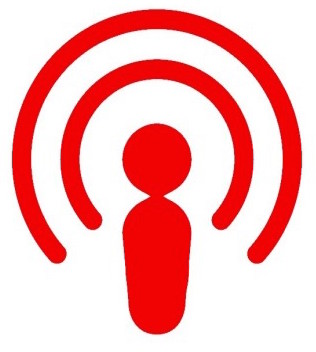11 - Social media
| Engaging and sharing |
Social networks such as Facebook and Twitter (and many others) have revolutionised the way people engage with causes and express themselves. This presents tremendous opportunities for stakeholders.
Engaging with your supporters and potential supporters has, in theory, never been easier. However, social media brings different expectations and new challenges.
DIRECT ENGAGEMENT
You now have the opportunity to engage directly with people, cutting out the media outlets that used to be your only route to an audience. To do this effectively you need to remember some of the golden rules of social media.
- It is about conversations. People are no longer passive recipients of news. They want a say. Are you able to engage with them directly and participate in conversations online?
- It is about being active. Using social media is about demonstrating that you are actively involved in the things you do. Stale or out of date social media accounts make you look out of touch and irrelevant.
- Choose the right social media. Think about your target audience. Do they want to engage with text, share photos, write in-depth articles, etc.? Different social media have different strengths. (See below.)
- Build trust. The best relationships are built on mutual respect and trust. This is what people are looking for in social media. So do not just try to sell things or send out pleas for support. Build relationships with supporters over time.
SOCIAL MEDIA AND JOURNALISTS
Journalists are now taught to use social media as a source for stories. They use online tools (such as hootsuite.com and tweetdeck.com) to monitor key words and pick up on developments that might be of interest to their audiences.
Do not forget to communicate with journalists, just as much as you communicate with anyone else. Let them know of any social media accounts that you use to engage with your supporters or to announce developments.
Encourage journalists to engage with you too as it enriches the online conversations.
DIFFERENT MEDIA, DIFFERENT FOCUS
Not all social media are the same. Be sure you are using the ones that are most relevant to your supporters and interested journalists. Here is a list of some common social media.
The big four:
Facebook allows you to set up a page with photos and regular updates about your work. Other Facebook users can show their support by clicking on a ‘like’ button and sharing the information with their own contacts.
Twitter is very good for referring people elsewhere and giving short snippets of information to keep people up to date. Topics can be ‘labelled’ with ‘hashtags’ (using the symbol ‘#’ in front of a word) to allow similar tweets to be grouped together.
Google+ (“Google plus”) is a tool for communicating and sharing information with people you know in a similar way to Facebook. It also has a group video conferencing feature.
LinkedIn is a professional networking tool, and therefore a bit more serious than Facebook or Twitter. It allows you to set up a ‘company page’ to talk about developments in your organisation.
Some other commonly used social media tools:
Instagram allows people to share photographs, images and very short video clips. (The BBC has started experimenting with very short news videos using Instagram.)
Vine encourages people to create and share short videos which repeat in a loop.
Pinterest calls itself a "social catalogue" and allows people to bring together photos and links around any subject. The aim is to ‘inspire’. It is also possible to set up a ‘business account’ on behalf of your organisation.
Reddit describes itself as the "front page of the internet". It allow users to collect links in one place and add comments or discussions about them.
Tumblr is a ‘micro-blogging’ site which allows links, photos and other content to be brought together in short articles.
StumbleUpon brings together items from around the Web, grouped according to a user’s interests. Users can rate their interest in the items they collect.
Note: This is just a short list of some common social media tools. There are many others, and sites like this can gain popularity or lose out to competitors very quickly. It is important to be alert to shifting trends, and to focus on the social media that are being used by people you are trying to communicate with.
READ, COMMENT, REFER
Social media can be daunting at first. In order to become familiar with their features without being overwhelmed, take a step by step approach.
- Ask your friends and colleagues which social media tools they use and why.
- Try one social media tool at a time, connecting up with your friends and colleagues where relevant.
- Take it slowly. Read and explore first so that you can see how other people are using the tool. Take note of interesting features or items.
- Once familiar with how it works, add your own items or comments. Social media is about sharing items and opinions.
- Use social media to refer to (link to) relevant items elsewhere online, especially to material generated by your own organisation.
- Play to the strengths of the social media you are using. For example, Twitter is good for short (sometimes irreverent) comments on current issues, whereas Pinterest makes more use of visual images.
- If using many different social media, manage them all together in one place using tools like hootsuite.com or tweetdeck.com.
- If a particular social media site is not meeting your specific needs, feel free to close down your account and move on.
LANGUAGE AND TONE
Using social media is like holding a conversation with a group of like-minded people. As a result the language used is very informal. Even if you want to refer people to formal reports or written articles, bear in mind that the tone of a social media conversation should be friendly, human and
conversational. Try to avoid making your comments sound dry or ‘corporate’.
FOR EXAMPLE
Plan International (slogan: “promoting child rights to end child poverty”) uses Twitter to link to hard-hitting and serious items. But the language is often friendly and engaging. Note the informal tone in this recent tweet about an advocacy toolkit.
LISTEN TO THE EXPERTS
Click below to hear our podcast on this topic.
|
|
|
This podcast includes tips and comments from a range of experts, including George Smeeton, Head of Communications at the Energy and Climate Intelligence Unit. |

